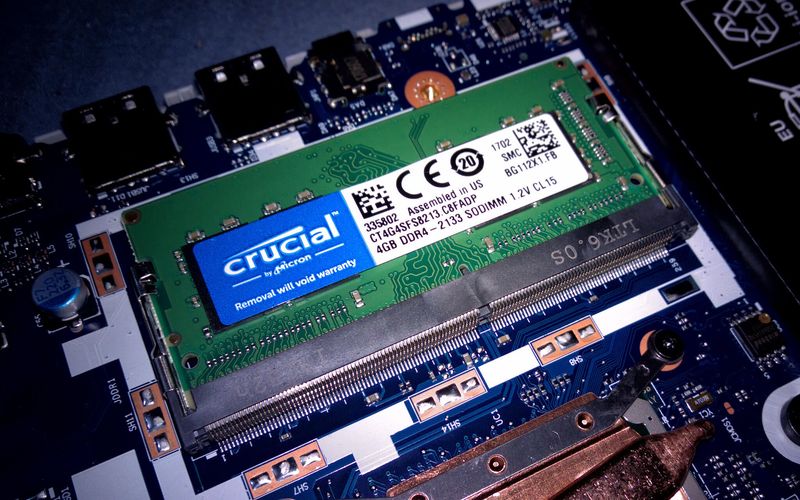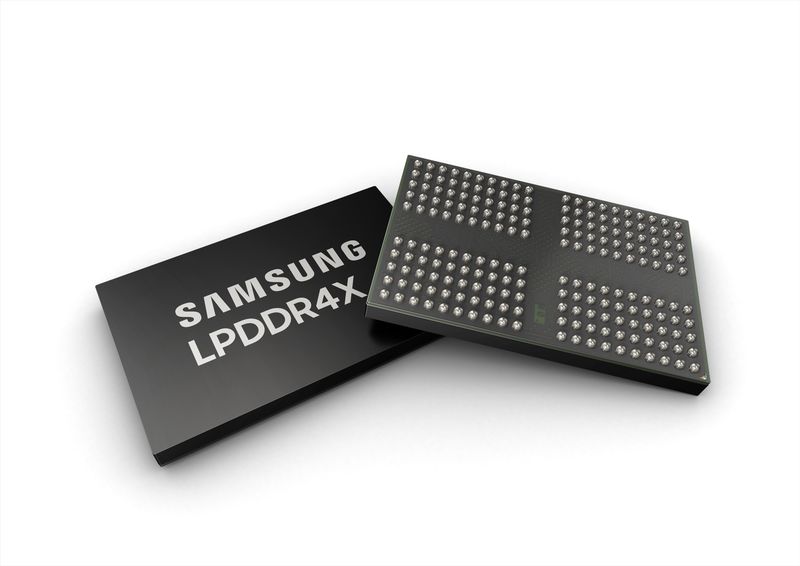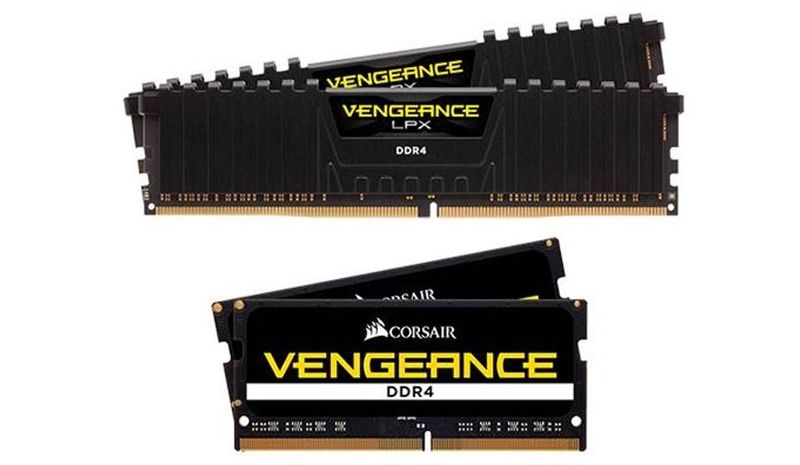SODIMM: What it is, features, and what are they used for
RAM memory is a fundamental element in any computer equipment since it is where the processor stores information that you need to access quickly. There are different standards of RAM, but there are also different formats. One of these formats is the RAM memory is the SODIMM , a format developed for portable computers and small format systems.
Index of contents
What is SODIMM

It is a RAM memory format specifically designed for laptops, where space is smaller. SODIMM is “just” a scaled-down version of a RAM memory module for a desktop computer.
Although SODIMM modules are used in systems where the amount of space is more limited. SODIMMs are mainly used in laptops , but they can also be used in office printers, professional-type routers, NAS devices, embedded systems such as Intel NUCs, among others.
The standards for SODIMMs do not differ at all from the standards for “normal” modules (DIMM format). By standards, we mean DDR3, DDR4, DDR5, and any standard that may come in the future.
SODIMM memory features
SODIMMs mostly have the same frequency, power, and voltage parameters (in some cases) as DIMMs. They are only differentiated by the format and by the maximum capacity of the modules, which, being more compact, is usually less. The characteristics of the SODIMM modules, according to generation, are:
- SDR SDRAM: We have a 100-pin version with two notches and a 144-pin version with a center notch. Currently they are already in disuse for being a very old format
- DDR SDRAM or DDR2 SDRAM: These are characterized by having 200 pins and a notch near one of the sides. The exact location of the notch can vary between the two formats. Currently they are already in disuse for being a very old format
- DDR3 SDRAM: It is characterized by having 204 pins and having a notch very close to the center
- DDR4 SDRAM: It is the standard used today and is characterized by having 260 pins and the notch is located after pin 144. These SODIMM modules have dimensions of 69.6mm wide and 30mm high.
- DDR5 SDRAM: It is estimated that the first systems with DDR5 SODIMM memories will arrive in 2022. These modules are characterized by having 262 pins and operating at a voltage of 1.1V, less than DDR4 SODIMM modules and the dimensions of this standard are maintained.
200-pin SODIMM
Something quite curious is that the 200-pin SODIMM modules can be for DDR and DDR2 type memories . For both cases the notch is in the following arrangement: 20 pins – notch – 80 pins. The notch on DDR2 memories is slightly offset towards the center of the module.
DDR and DDR2 modules are not interchangeable, this notch is integrated to avoid cross installation. This slight design modification is integrated to avoid the installation of memory in slots of different generations, since there is electrical incompatibility. DDR SODIMMs operate at 2.5V and DDR2 SODIMMs operate at 1.8V.
LPDDR format
Physically a DDR SODIMM and an LPDDR SODIMM are identical, but there are some technical differences. Although the LPDDR standard has existed since the first SODIMM versions, it was not until the DDR4 standard (and therefore LPDDR4) that its use emerged.
LPDDR is short for Low-Power DDR, which can be translated as low-power DDR memory . This low-power version offers the same features and performance as a conventional SODIMM, but with greater efficiency. Of course, LPDDR SODIMM modules have been developed for laptops and systems where autonomy is a critical factor.
Without going into excessively technical aspects, LPDDR4 memories offer a performance improvement of 50% and a 40% reduction in consumption compared to LPDDR3. The regulator and standardized format JEDEC published the standard on August 25, 2014, the main improvements being :
- Doubling the speed of the interface is achieved and numerous electrical enhancements are included, including a change in the I / O standard to a Low Voltage Oscillating Termination Logic (LVSTL) system
- Introduces a doubling of the internal preload size and minimum transfer size
- Changing from the 10-bit DDR command / address bus to a 6-bit SDR bus
- Changing from one 32-bit wide bus to two independent 16-bit buses
- Automatic update is enabled by dedicated commands , instead of being controlled by the CKE line
In addition to these changes, this type of memory can be built in three different ways:
- Data and control lines are connected in parallel to a 16-bit data bus and a single chip that selects the connection independently per channel
- Two 32-bit wide half buses and parallel control lines including chip selection
- Two independent 16-bit wide data buses
LPDDR4x
Variants of the LPDDR4 standard developed by Samsung that was baptized by the company as LPDDR4x. The two SODIMM variants are technically the same, simply in LPDDR4x the I / O voltage (Vddq) is modified from 1.1V to only 0.6V. JEDEC released the LPDDR4x standard on March 8, 2017.
In addition to a voltage reduction, there are some improvements that we could qualify as minor. LPDDR4x allows the single channel die option for “simple” applications such as MCP, PoP and IoT packages. Additional definition and timing improvements are also added for the highest speed rating of 4266MT / s.

LPDDR5
Standard published by JEDE on February 19, 2019 that introduces the following changes:
- Data transfer rate increases up to 6400MT / s
- Input differential clock signals
- Preload size is not multiplied again , remaining at 16n
- Number of banks increases to 16 , but divided into four groups, something similar to what DDR4 offers
- Power saving improvements via commands to decrease data transfer and dynamic frequency and voltage scaling
- New clock architecture called ” WCK & Read Strobe” (RDQS)
Differences between DIMMs and SODIMMs
As they say, all thumbs are fingers, but not all fingers are thumbs. DIMMs and SODIMMs are RAM memory modules, but basically what changes are the dimensions. Beyond nomenclatures, SODIMMs are about half the size of DIMMs.
DIMMs are typical memory modules for desktop computers (mostly with little lights on them). The problem with DIMMs is precisely that they are very long and that in systems where size is scarce, it is a problem. SODIMMs precisely solve this problem, leaving additional space for other components. The DIMMs have a standard 125mm length while SODIMMs have a standard length of 63m.
But it is not the only advantage of SODIMMs over DIMMs. The SODIMM memories are much more efficient , since it is necessary to consume less to increase the autonomy of the system. SODIMMs also have fewer connection slots, as there is less contact surface. Additionally, in the SODIMM modules the pins are installed on both sides of the memories, or what is the same, it is as if we fold the pins of a DIMM module on itself (and remove some pins, of course)

What is SODIMM memory used for?
SODIMM memory is mainly used for notebook computers , where space is really limited and many elements have to be integrated in the minimum possible space. Although its use has been extended to other systems, such as compact computers, such as the Intel NUC . We can also find mini-ITX motherboards that make use of SODIMM memories , but in most cases it is portable RAM .
They are also used for small development boards and boards for embedded systems, some consoles also use SODIMM modules, mid-range and high-end NAS use SODIMM modules and many other products.
Final words on SODIMM memories
The difference between SODIMMs intended primarily for laptops and DIMMs for desktops (and servers, among others) are minimal. SODIMMs are mainly more compact, considering the space limitations that we find in laptops, compact computers, and the like. Change the number of pins and capacities a bit as well, since SODIMMs can hold fewer memory chips than DIMMs.
Perhaps the greatest variation of SODIMMs is in the LPDDR variants, which offer improvements in power consumption. LPDDR modules are characterized by having much lower consumption than DDR modules (either DIMM or SODIMM). Increasing energy efficiency is achieved by using some “tricks” that allow reducing energy consumption by adjusting the variable frequency, although there are other mechanisms. All in search of maximizing the autonomy of laptops, although these modules can also be used in the other systems that we have discussed that support the SODIMM module.



